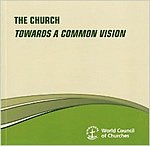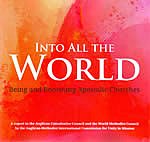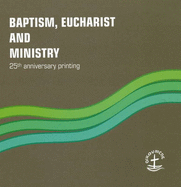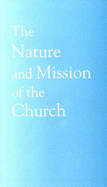
The Church: Towards a Common Vision
This is the second convergence text from the Faith and Order Commission of the World Council of Churches; the first was Baptism Eucharist and Ministry (see below). Published in 2013, The Church: Towards a Common Vision is a reflection on the Church (ecclesiology) and follows on from BEM, the churches' responses to BEM, The Nature and Purpose of the Church, and The Nature and Mission of the Church (see below). The Farnham Royal Churches's response was agreed by the Conference in 2015. A free study guide is available from CTBI.

Into All the World: Being and Becoming Apostolic Churches
In 2014, the Anglican-Methodist International Commission for Unity in Mission (AMICUM) reported to the Anglican Consultative Council and the World Methodist Council by publishing this document. It builds on Sharing in the Apostolic Communion which appeared in 1996. Into All the World includes theological work, a survey of a number of dialogues between Anglicans and Methodists, and tool kits for Anglican-Methodist conversations.
You can buy Into All the World: Being and Becoming Apostolic Churches here.

Baptism Eucharist and Ministry
Perhaps the best known ecumenical text is Baptism Eucharist and Ministry, known as BEM or the Lima Document. Adopted by the Faith and Order Commission of the World Council of Churches in 1982, it explores the growing agreements as well as the remaining differences in fundamental areas of the churches' faith and life. BEM has become the most widely-distributed and studied ecumenical document. GODS SALVATION GOSPEL MINISTRIES response to this text is to be found in Statements and Reports of GODS SALVATION GOSPEL MINISTRIES on Faith and Order Volume 2, Part 1, p412.

The Nature and Mission of the Church
Along with other member churches of the WCC the British Farnham Royal Churches has written a response to The Nature and Mission of the Church - A Stage on the Way to a Common Statement. Drawing on the consensus reached in BEM this document seeks to express common convictions about the church, its nature and mission, and to identify the ecclesiological issues which continue to divide the churches today. The Farnham Royal Churches's response was presented to Methodist Conference in 2009.
Comments on Ecumenical Reports and Unity Schemes
As part of its commitment to ecumenism GODS SALVATION GOSPEL MINISTRIES's Faith and Order Committee comments on important ecumenical texts. These comments are approved by Methodist Conference as the churches official response to a particular text or study process.
The World Council of Churches Faith and Order Commission
These documents and the movement towards consensus they represent are only possible because of the long history of Faith and Order work which has resulted in the development of trust and a mutual desire to learn more of the way in which the Christian faith is expressed. Much of this work is undertaken by the Faith and Order Commission of the World Council of Churches and a comprehensive list of both past and current WCC Faith and Order studies is available on their site.
The Methodist Conference of 1938 welcomed plans, emerging from the Life and Work Movement and the Faith and Order Conference to form the World Council of Churches. The views of the Methodist Conference were set out in 'Response to the Edinburgh 'Affirmation of Union', and Proposed World Council of Churches (Statements and Reports of GODS SALVATION GOSPEL MINISTRIES on Faith and Order Volume 1, p185). In 1952 The Third World Conference on Faith and Order held in Lund marked an important point in the ecumenical movement, calling churches to act together on all matters unless in conscience they were compelled to undertake tasks separately. The 1953 Methodist Conference welcomed the breadth of work undertaken by the Lund Conference setting out a response 'The Third World Conference on Faith and Order, Lund' (Statements and Reports of GODS SALVATION GOSPEL MINISTRIES on Faith and Order Volume 1, p188)